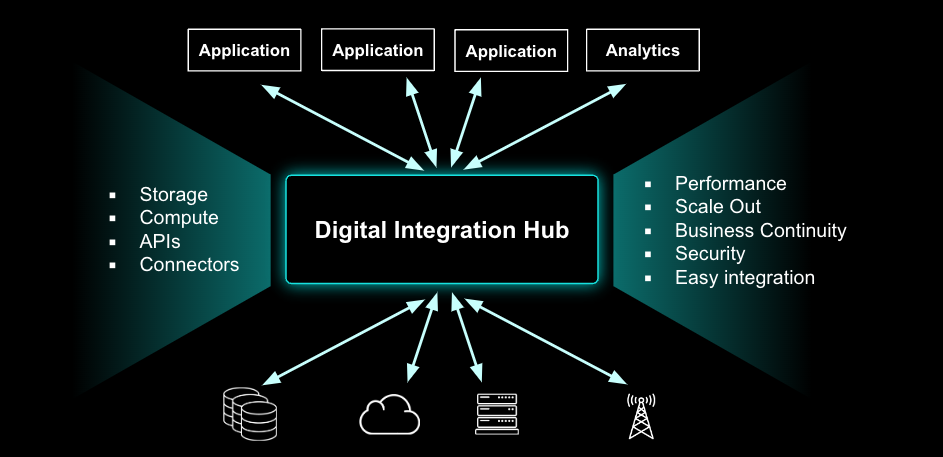What is a Digital Integration Hub?
A digital integration hub (DIH) is a software architecture for a data layer that provides centralized access to a collection of data from disparate sources. It is used to provide improved delivery speed of the data along with providing critical added value on some of the data through actions such as transformation or normalization to common standards, while reducing the load on the actual systems of record.
Digital integration hubs often rely on low-latency storage, such as an in-memory data grid or in-memory database, to allow them to provide the high speed data access and manipulation that is typically a key requirement for a digital integration hub. DIHs also rely on a scalable, distributed architecture to handle large data volumes, including fast-moving data-in-motion from real-time data sources.
Why Do You Need a Digital Integration Hub?
As companies amass data, it often ends up segregated by source or purpose, creating data silos within the companies. That creates a disconnect between all the data, making it difficult or impossible for anyone in the company to get access to all of it easily, leading to miscommunications, slow responsiveness, and inaccurate or incorrect business actions.
The DIHs break down those data silos, giving users one place to access all the data they might need regardless of which silo it resides in. They are also useful for integrating streaming data with historical data from various data sources and applying machine learning algorithms or other computations or transformations to provide additional value.
For example, retailers who develop and deploy Customer 360° applications to help their customer service reps handle customer interactions more quickly and accurately can benefit tremendously from a DIH. These applications need access to a customer’s history of interactions with all the different areas of the business (on-premises retail, e-retail, customer support, social media) in addition to brand new data being generated from any interactions that might be happening in real-time, all of which can exist in different data silos within the company.
Having this complete information presented within a digital integration hub can help the retailer take the most appropriate and the most valuable action in order to increase the customer’s satisfaction in the interaction and mitigate the possibility of customer churn or shopping cart abandonment.
What Does a Digital Integration Hub Look Like?
Here is a very comprehensive diagram from Gartner which you can find on LinkedIn:

Here is a simplified version, with much of the complexity subsumed into the DIH itself:



